Pasture Raised Pork- Ordering Whole and Half Hogs
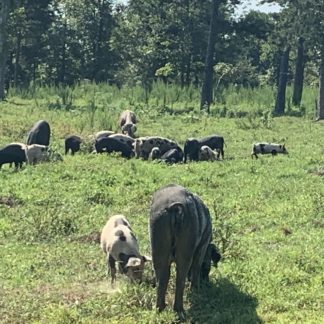
Pigs happily foraging on pasture as the sun rises each morning always brings a smile to my face. Pigs in their natural habitat foraging for a large percentage of their diet plays an important part in our pasture restoration. Pigs are omnivores and enjoy eating grasses, legumes, and insects. We feed a fermented barley that […]
How did you get started with pigs?
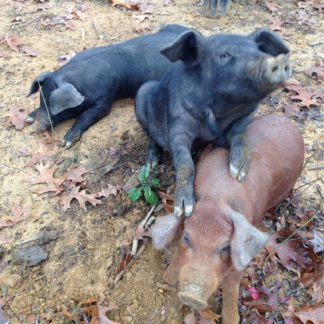
To be honest, we weren’t planning on raising pigs. However, we realized that producing the kind of healthy beef we wanted would take time to grow; to raise and finish a cow on grass alone takes about three years. In the meantime, we needed to generate an income and establish ourselves as a business while […]
What’s your farm’s history with chickens?
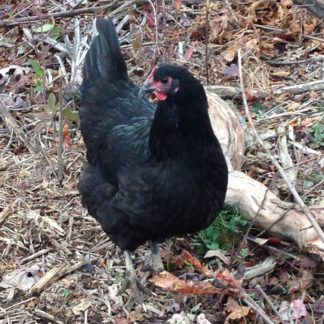
We knew grass-finished cows would take a few years to grow and finish. In the meantime, we needed to establish our farm as a business and spread our name. Pastured laying hens provided us with farm-raised eggs to sell to customers looking for healthy proteins. Our first chickens were brooded on the back porch of […]
What were the first animals on your farm?
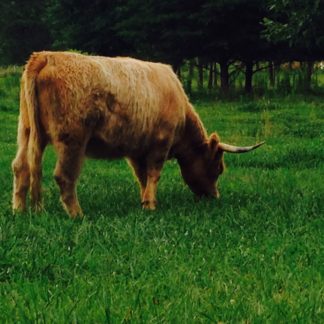
Our farm started with two kinds of cattle: Scottish Highlands and Texas Longhorns. We chose these breeds because of their browsing nature. They could bulk up on many different varieties of forage, including the briars and brush covering our property. The farm-to-be was an old logging property that was clear-cut about 10 years prior to […]
Ordering A Whole, Half, Quarter, or Eighth Beef
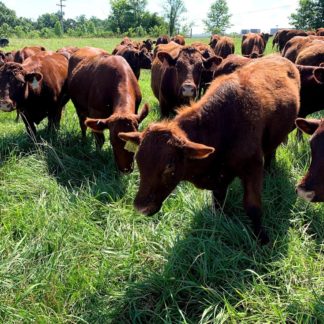
The sound of cattle happily chewing their cud while standing on pristine pasture after their daily move is one of the many reasons we choose to grass finish our cows and provide them with fresh pasture every day. Cattle in their natural habitat foraging for lush grasses, legumes, and forbs plays an important part in […]
Organically Fed Pastured Chicken
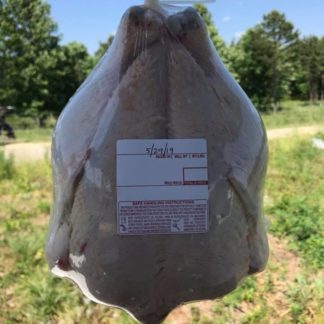
At Cove Creek Farm we raise our chickens on pasture. Chickens are naturally omnivores and are happiest when out in the sunshine with room to roam. They get to eat grass, legumes, and insects. Their diet is supplemented with organic feed grown nearby in Kentucky. We feed our chickens the highest quality local feed because […]
The Fine Art of a Good Pig Roast
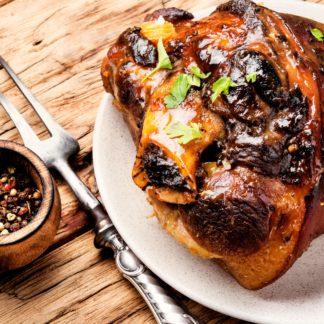
When it comes to swine dining, it’s as true as ever that you can’t fatten the pig on market day. Roasting pigs is a time-honored, and always well-attended past time that takes a good bit of preparation and know how to pull off. Here at Cove Creek Farm, we’ve put in the time with our […]
How many calories are in a pound of meat?
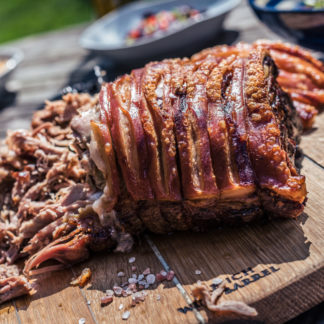
Quick answer: it ranges between about 650 and 1300 calories depending on the amount of protein and fat. Lower fat meats have less calories. To meet your daily calorie needs on just meat, most people would need to eat between 1 and 2lbs of meat per day. There are many people who feel best on […]
Heritage Breed Pigs
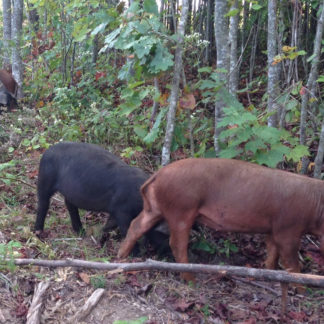
At Cove Creek farm we raise three heritage breeds: Large Black, Gloucester Old Spot, and the Mule Foot.
Benefits of Rotational Grazing
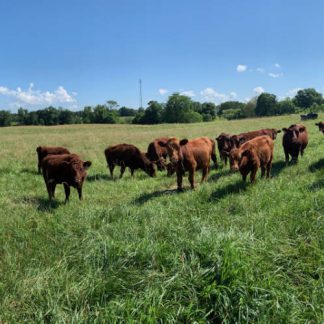
At Cove Creek Farm we use rotational grazing to improve the health and productivity of the pasture.
What is Rotational Grazing?
For many who use rotational grazing, planned frequent movements of livestock on pasture, the goal is to use livestock as a tool to improve the soil and the forage diversity of the farms they manage. Instead of letting animals continuously graze down an entire pasture, the animals are herded into a section of the pasture for a short period of time. Many small farms raising grass-fed, grass-finished beef, lamb, goat, or pastured pigs and chickens, use rotational grazing techniques. The constant movement of animals in tightly packed herds with extended rest between grazings would have been natural for large herding animals. And as was the case in a more natural state, not just the land, but the animals’ health and the quality of meat ultimately produced are winners.
(more…)